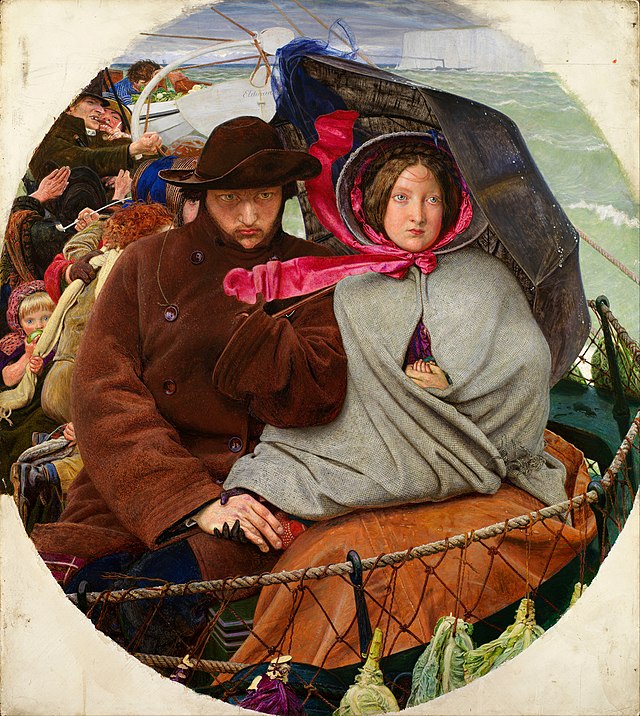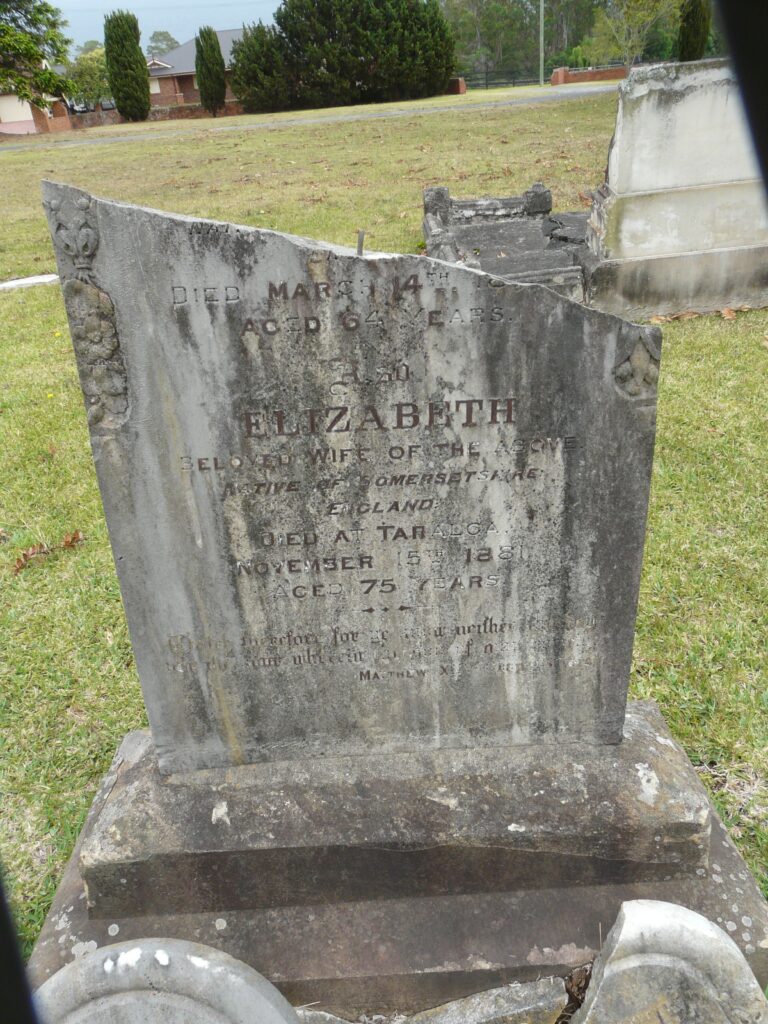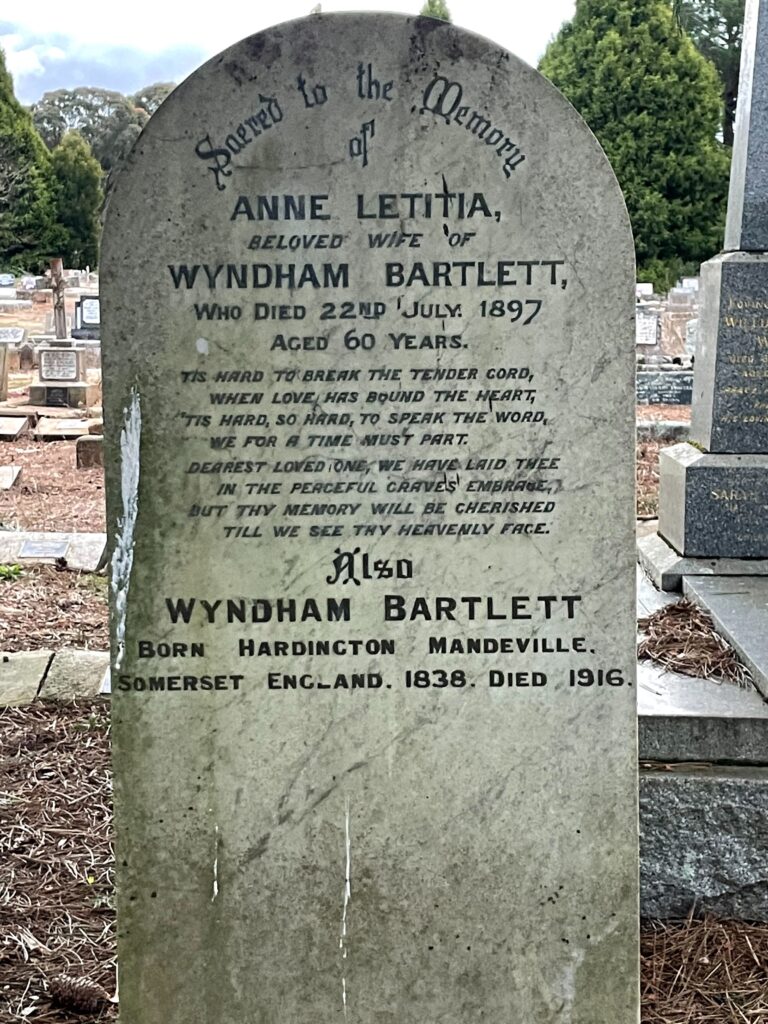Introduction
John Bartlett was a small-scale farmer and beer retailer at Hardington. In 1863, he and his family emigrated to Australia under an assisted passage scheme, following in the footsteps of their three children, who had emigrated in 1855. They took with them their one-year-old niece, Adelaide, whose mother had died shortly after her birth. Adelaide’s father, meanwhile, remained in England, sacrificing his relationship with the child for the sake of her future well-being.
Birth
John Bartlett was born at Hardington on 9 October 1809.[1]
Marriage
John married Elizabeth Apsey Haggett at Hardington on 5 April 1836. Elizabeth’s father, John Haggett, was a sailor who died in November 1821.
At the time of their marriage, Elizabeth had two illegitimate children: Albert Haggett, who was four or five, and Elizabeth Bartlett Haggett, who was a similar age.[2] Given the middle name of her daughter, it is possible that John may have been the father.
After their marriage, John and Elizabeth had four children: Wyndham, born in 1837; Herbert, born in 1840; John Ernest, born around 1846; and Selina, born in 1848.
Occupation
John was a farm labourer until the late 1840s. The 1851 census recorded him as a farmer of fifteen acres, and the 1861 census as a farmer of sixteen acres.
A trade directory of 1861 lists John as a beer retailer.
Wife’s inheritance
In 1846, John’s wife, Elizabeth, inherited the income for life from one-third of the residue of the estate of her maiden aunt, Dorcas Apsey, with the remainder to her children.[3] This inheritance helped elevate John from a farm labourer to a farmer.
Residences
In June 1841, John and his family lived in the High Street. By 1843, they lived in Pen Lane (plot 54 on the tithe map).
The 1851 census shows John and his family living with his mother-in-law, Jane Haggett, at “Lyatts,” but the enumerator may have mistakenly applied this address to Pen Lane. His mother-in-law died in 1855.
In 1860, John engaged a blacksmith of Ryme Intrinseca named Pomeroy to put up some railings in the front of his house.[4]
Three children emigrate
Albert Haggett, Elizabeth Bartlett Haggett and Wyndham Bartlett emigrated to New South Wales in 1855 on board the Gilmore. The ship departed from Southampton on 12 June 1855 and arrived at Port Jackson on 18 October.[5]
A family arrangement
In the summer of 1861, Sarah Haggett, the young wife of Elizabeth’s brother, Joseph, became pregnant for the first time after eight years of marriage.[6] Unfortunately, the pregnancy took a heavy toll on her health. The baby was born at their home in Yeovil on 7 April 1862, but two weeks later, Sarah developed anasarca, a severe swelling in various parts of her body, probably caused by her heart disease.[7] Both mother and baby went to stay with John and Elizabeth at Hardington. so that Elizabeth could look after them. As Sarah’s health declined, it is entirely plausible that she took comfort in making plans for the baby’s future, encouraging John and Elizabeth to join their children in Australia and to take her baby with them. These plans may have been well advanced by 7 May when Joseph Haggett registered the child’s birth under the name “Adelaide,” which had associations with Australia.[8]
Sarah died on 29 May 1862 and was buried at Hardington on 1 June.[9] Unable to care for Adelaide himself, Joseph probably accepted that she should remain with Elizabeth. The child was baptised at Hardington on 7 September 1862.
After waiting for winter to pass, John and Elizabeth proceeded with their plans, leaving Plymouth on board the Spitfire on 30 May 1863 with their children, John Ernest, 16, and Selina, 14 and the one-year-old Adelaide Haggett. The anguish experienced by Adelaide’s father, knowing he would never see his daughter again, must have been unbearable. Tragically, the child never even reached Australia, dying at sea from measles on 4 July 1863.[10]
The following year, John and Elizabeth’s son, Herbert, and his wife Jane also emigrated to Australia, travelling on the Sir Robert Sale, which arrived in New South Wales on 29 October 1864.[11]
Death
John died at Dapto, Wollongong City, New South Wales, on 14 March 1871, aged 61.
Elizabeth died at Taralga, Upper Lachlan Shire, New South Wales, on 15 November 1881, aged 72.
References
[1] Find a Grave Index. The assisted immigrant passenger lists give John’s parents’ names as “Peach & Elizth” and their residence as Hardington. This may mean that Peach was his father’s surname and Elizabeth his mother’s Christian name, suggesting that John was illegitimate.
[2] Elizabeth Bartlett Haggett was baptised at Hardington on 14 June 1835. However, the 1841 census recorded her as ten.
[3] The will of Dorcas Apsey, dated 19 May 1843, proved at Wells on 10 February 1846.
[4] Taunton Courier and Western Advertiser, 25 July 1860, p.5.
[5] New South Wales, Australia, Assisted Immigrant Passenger Lists, 1828-1896.
[6] When they married in 1853, Joseph was about 47 and Sarah about 21. Joseph’s first wife, Susan, with whom he had five children, died in 1842.
[7] Birth certificate of Adelaide Haggett; death certificate of Sarah Haggett.
[8] It may be significant that Joseph took a month to register the child’s birth.
[9] Death certificate of Sarah Haggett. She probably died at John Bartlett’s home because he was present at her death and registered her death.
[10] Registers of Births, Marriages and Deaths at Sea, 1844-1890. This record, the Hardington baptism register and the Assisted Immigrant Passenger Lists refer to Adelaide as Adeline, suggesting that the family had softened the name. The Spitfire arrived at Port Jackson on 24 August 1863. The journey of 86 days was considerably less than that of the Gilmore, which took 128 days.
[11] New South Wales, Australia, Assisted Immigrant Passenger Lists, 1828-1896.





